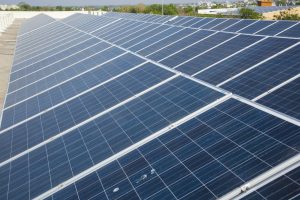In early July, Tongwei and LONGi, two of the world’s largest manufacturers of high-purity silicon and monocrystalline silicon wafers, released financial statements for the first six months of 2024. The statements indicate that both companies suffered substantial losses, with Tongwei incurring a 3 to 3.3 billion yuan loss and LONGi seeing a 4.8 to 5.5 billion yuan loss in the same period.
This is significant because of the dominant role that these two companies play in the solar panel supply chain. For high-purity polysilicon, a key raw material in solar panel manufacturing, Tongwei controlled more than one-fourth of the global market share in 2022, according to a late 2023 ratings report. The same report also indicated that Tongwei accounted for 13 percent of global solar cell production, the highest of any company for six consecutive years. LONGi is similarly dominant in module production, where they controlled nearly 19 percent of global market share in 2023.
This is illustrative of a broader trend in solar manufacturing: Supply chains are overwhelmingly concentrated in China. A 2022 report from the International Energy Agency (IEA) found that “China’s share in all the manufacturing stages of solar panels (such as polysilicon, ingots, wafers, cells and modules) exceeds 80 percent.”
Even within China, production is hyper concentrated in a few western provinces. For example, the IEA report held that in 2021, China was home to 79 percent of all global polysilicon production, 42 percent of which was in Xinjiang alone. In Xinjiang, one single factory was responsible for 14 percent of all polysilicon production in 2021.
For LONGi and Tongwei, the primary headwind is low prices for solar equipment. Tongwei’s July report stated that in spite of strong growth in exports and domestic solar installation, prices were negatively impacted by supply chain concentration. LONGi also cited overcapacity and low prices as the reason for their losses in the first half of 2024.
According to a LONGi investor presentation, the price of wafers and modules dropped 50 percent in 2023, while prices for polysilicon and cells dropped by 66 percent and 55 percent respectively. The presentation claims that these trends have continued into 2024, with polysilicon and wafer prices dropping by a further 15 percent and module prices dropping by 5 percent, while prices for cells have stayed level for the first half of 2024.
For companies the size of Tongwei and LONGi, these sorts of downturns in the business cycle are painful but endurable. For smaller manufacturers, though, they can be fatal. They also create a hostile environment that might dissuade other investors from entering the PV supply chain market.
Supply chain concentration is bad for the energy transition for a whole host of reasons. The first reason is that concentration of PV supply chains in one country poses a threat to energy security in other nations. It isn’t hard to imagine that China could find itself in a dispute with another country and use access to PV products as leverage.
On a more fundamental level, PV supply chain concentration threatens market stability, which matters because of its impact on the fast and affordable rollout of clean technology. When so much manufacturing capacity is concentrated in one country, let alone one province or even one factory, that makes the whole supply chain really vulnerable to local crises. Imagine what would happen to PV prices if there was a natural disaster in western China. Political unrest, power shortages, or any other kind of localized crisis could hamstring manufacturing.
This vulnerability ultimately translates to higher prices downstream. Take as an example the United States’ voluntary renewable energy market. In this case, offtakers (usually big corporations) sign a Power Purchasing Agreement (PPA) with a renewable energy developer to purchase the clean power from a power plant before the solar arrays are built. In that contract, they specify the pricing parameters for the cost of the electricity. That means that the developer needs to price in the likely cost of materials months in advance. Volatile prices that are prone to spiking cause the developers to build the worst-case scenario into their pricing models, which results in higher PPA costs.
For their part, Chinese regulators are not resting on their laurels. In late June, the National Energy Administration announced that they would take steps to slow solar manufacturing growth by curbing “low-end” manufacturing capacity additions. More recently, the Ministry of Industry and Information Technology released a draft policy document that stated a desire to limit capacity expansions and encourage PV manufacturers to instead focus on research and development.
These policy documents aren’t binding, but they are a sign that alarm bells are starting to ring in Zhongnanhai, and we might see more decisive action to limit overcapacity and stabilize the market.

































